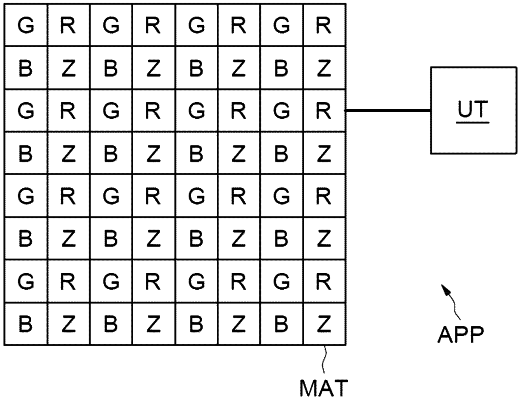| CPC H04N 25/60 (2023.01) [H04N 23/843 (2023.01); H04N 25/13 (2023.01); H04N 25/705 (2023.01)] | 22 Claims |

|
1. A method for estimating a missing or incorrect value in a table of values generated by a photosite matrix, the value to be estimated and each neighboring value of the table being associated with a colorimetric component, the method comprising:
defining a kernel of the table comprising the value to be estimated and the neighboring values;
determining a weight for each primary neighboring value of a same colorimetric component as that of the missing or incorrect value to be estimated;
estimating the value to be estimated based on the primary neighboring values and the weight associated with the primary neighboring values;
defining, in the table, several axes passing through a location of the missing or incorrect value to be estimated, the weight of each primary neighboring value being determined according to differences between neighboring values disposed in the table on one of the defined axes and neighboring values disposed in the table parallel with the one of the defined axes and positioned in relation to the one of the defined axes on a same side as the primary neighboring value for which the weight is determined; and
calculating semi-gradients, based on the differences, each semi-gradient being associated with a given direction with respect to the location of the missing or incorrect value to be determined, the weight of each primary neighboring value being determined based on the semi-gradient associated with a direction defined between the location of each primary neighboring value and the location of the missing or incorrect value.
|